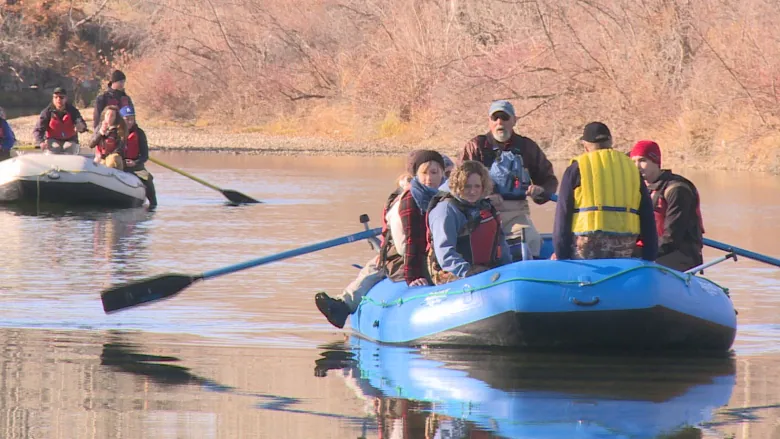‘The year after the flood year was the lowest we actually have ever seen,’ biologist says
River watchers are hoping this year’s brown trout count in the Elbow River continues to show growth after the 2013 Alberta flood had a devastating effect on the population.
Chris Bjornson, a senior fisheries biologist with Golder Associates, says the flood three years ago continues to affect the population.
“The number of [spawning grounds] we have seen in the Elbow River has declined since the 2013 flood,” Bjornson explained.

The count has taken place for about 14 years.
“There was generally increasing numbers [before 2013]. During the flood year, there were low numbers, the year after the flood year was the lowest we actually have ever seen, and then last year there was a bit of recovery,” Bjornson said.
“The numbers started to climb up again — not back to average yet — but there has been some recovery,” he added.
He said this year’s numbers so far, are similar to last year’s, which is promising.

The count looks to track redds, which are the spawning grounds of brown trout.
“The female, where she is spawning, constructs a small nest in the bed of the river … She builds a depression, she puts her eggs in and she covers that with gravel to protect the eggs, because they are going to incubate through the winter into the spring,” Bjornson explained.
“This actually leaves a visible mark on the river that we can see [and count],” he said.
Michael Kenny, president of the stewardship group Calgary River Valleys, says the annual count serves several purposes.
“It’s a blue ribbon river and it attracts thousands of fisher people from around the world,” Kenny said.
“So it’s great for the economy, it’s great for the environment, and overall, the most important thing is that it tells us the health of our rivers and streams.”
Bjornson says the size of a redd depends on the size of the female trout.

“There will be a few thousand [eggs] in any given redd. A small proportion of those will successfully incubate, the young fish will swim out of the gravel into the river and a few of those will turn into juveniles and then adults,” Bjornson said.
“The number of fish that actually survive is quite small.”
He said Mother Nature can take years to restore itself after a major weather event.
“During the flood, a lot of the gravels were pushed to the side of the river, and so over the coming years, the lesser floods, the spring flows will inundate those gravels and bring them back into the main channel of the river and make them available for the trout again.”

